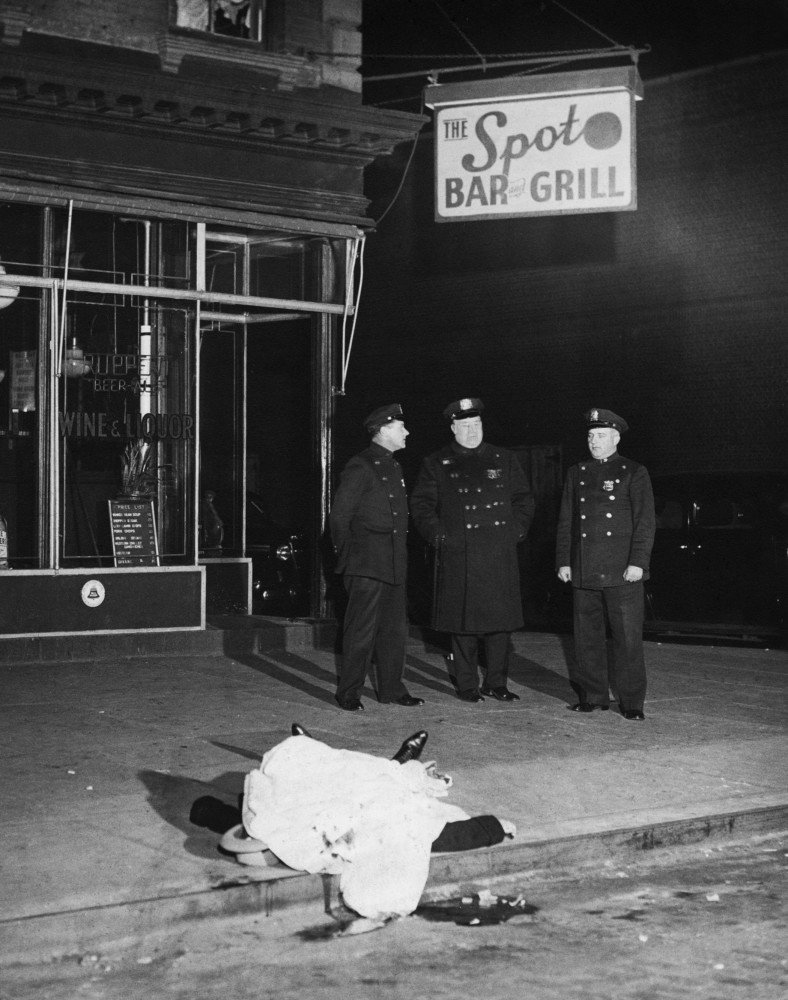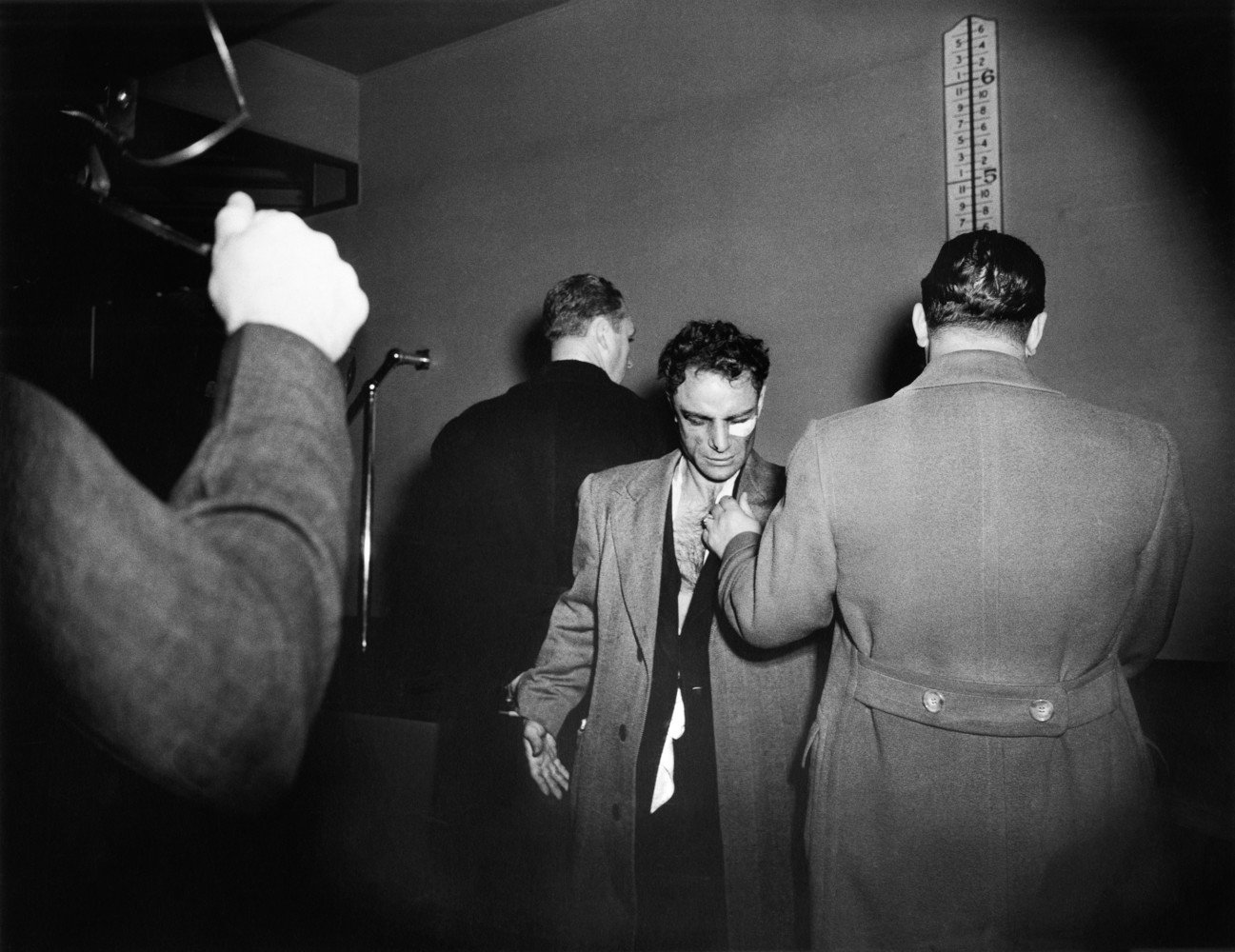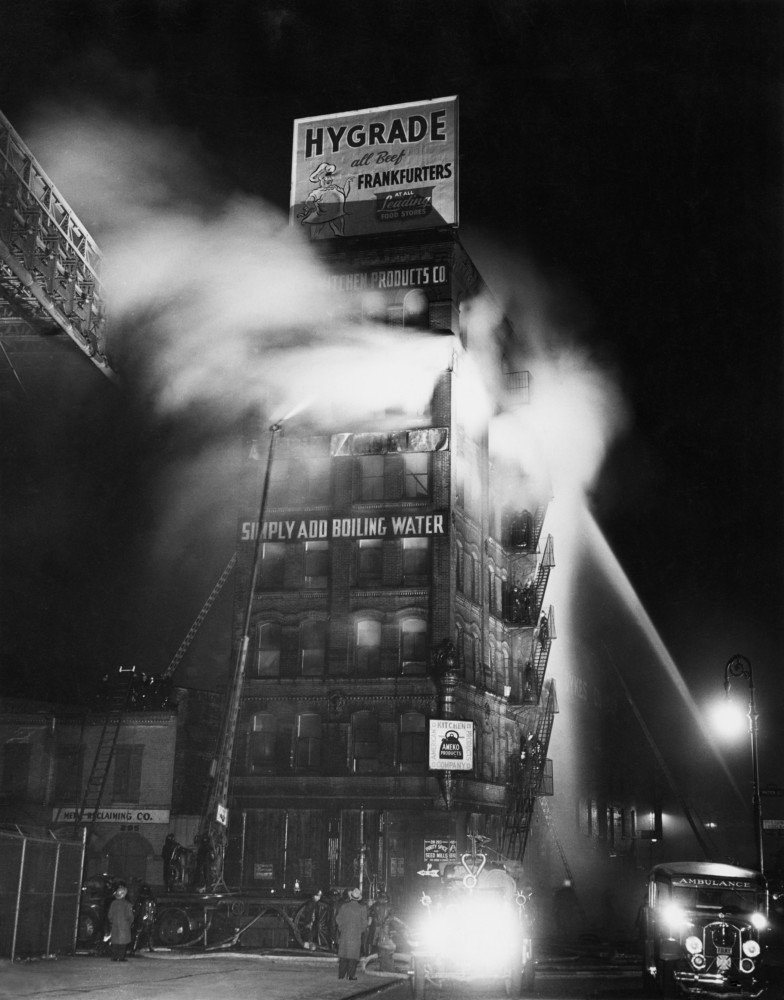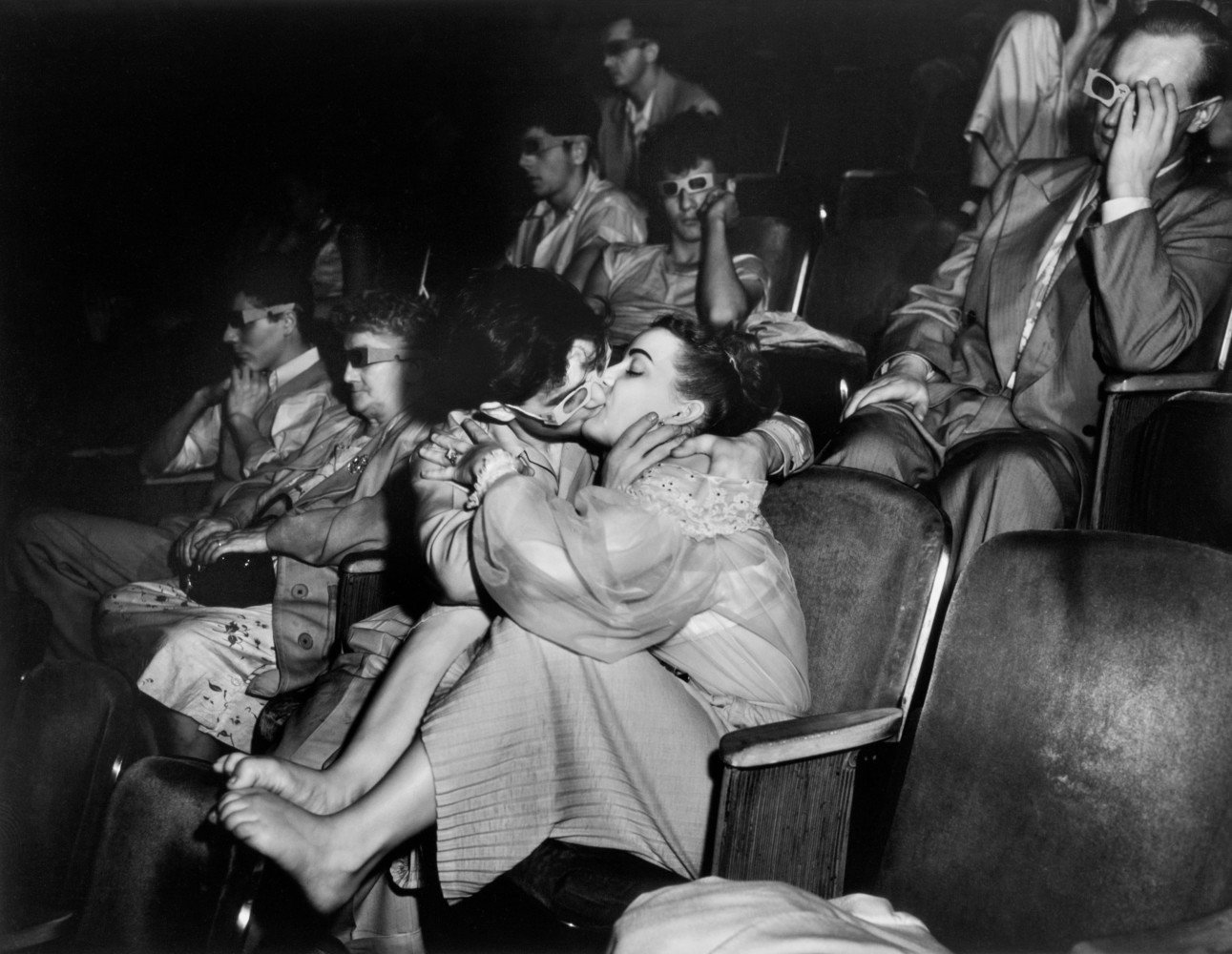Arthur 'Weegee' Fellig (June 12, 1899 – December 26, 1968) was a street photographer with a fascination for murders and misfits, who occupied a unique place between burlesque and film noir. He remains arguably the most renowned photographer of the 1940s and 50s, having achieved legendary status. His work is immediately recognizable and stands alone in the history of photography.
"I am a natural-born photographer, with hypo in my blood."
Arthur 'Weegee' Fellig was born on June 12, 1899 in Lemberg, Galicia, Austria-Hungary, which is now known as Zolochiv, Ukraine. His birth name was Usher Fellig, but it was changed to Arthur when he and his family immigrated to New York in 1909. He began his career as a photographer at the age of fourteen.
He was self-taught and only gained regular employment at a photography studio in 1918.
In 1935, while still a teenager, he began working as a freelance news photographer and adopted the name "Weegee". Perhaps indicative of his self-promotion, he created a catchy pseudonym and later proclaimed himself 'Weegee the Famous'.*
In 1938, he was granted permission to install a police radio in his car, which allowed him to capture sensational photographs of news events and offer them for sale to publications like the Herald-Tribune, Daily News, Post, the Sun, and PM Weekly, among others.
From 1935 -1946, he had a near monopoly on images of the violent aftermath of New York City's Prohibition era.
Weegee, known for his gritty black and white photos, is one of the most notorious photographers in street photography's history, even though he never referred to himself as a street photographer. His use of a 4×5 Speed Graphic large-format press camera and flash added a layer of drama to his already dramatic shots.
He typically used a camera preset with f/16 aperture, 1/200 second shutter speed, and flashbulbs. He would set the focus distance at ten feet, but was never sure what his photos would look like until he processed them. His style of shooting with flash in the streets has significantly influenced other photographers such as Diane Arbus, William Klein, and Bruce Gilden.
* [Weegee sounding like OUIJA board and people thought he arrived at a murder scene before it happened.]
[Cab driver with Macy's Thanksgiving Day Parade clown, New York], c.1942 © Weegee Archive/International Center of Photography
[Charles Sodokoff and Arthur Webber using their top hats to hide their faces, New York], January 26, 1942 © Weegee Archive/International Center of Photography
In spite of being known for his crime and death photographs, some of his works were quite delicate, like "Boy Meets Girl - From Mars" (1955) which is known as one of the most romantic, poetic and surreal photos of its time.
Boy meets girl - from Mars, c.1955 © Weegee Archive/International Center of Photography
All of his photos were full of life and captured the essence of the moment. One of his most famous photographs was captured on a particularly hot summer day, in 1941, while he was perched atop a lifeguard's station in Coney Island, Brooklyn. He captured a massive crowd of bathers that were all looking up to him, and he had to scream to get their attention.
In the mid-1940s, he used infrared film to photograph moviegoers in New York cinemas. He produced a series of mesmerized kids, exhilarated teens and embracing couples, which surprisingly turned out to be moving.
Weegee was famous for his portraits of cabaret singers and their lively audiences at Sammy's Bowery Follies, also known as Sammy's on the Bowery. This popular venue in the Lower East Side was a meeting place for people from all walks of life - from the rich and famous to the forgotten and homeless. Weegee's unique eye for capturing the essence of his subjects is reflected in the works of many other photographers, such as Lisette Model and Diane Arbus. Weegee's own self-portraits are also a testament to his wit and character.
[Ethel, queen of the Bowery, and man, Sammy's on the Bowery, New York], c.1943 © Weegee Archive/International Center of Photography
Weegee became renowned for capturing the essence of New York in his edgy, black and white photographs taken with a flash. His unique style quickly gained recognition and popularity. While his crime photographs were widely published in the tabloids during the 1940s, his work was also showcased in prestigious institutions such as the New York Photo League in 1941 and The Museum of Modern Art (MoMA) in 1943.
Lisa Hostetler, the George Eastman House curator, highlights Weegee's photography's uniqueness. It was successful in popular media and respected by the fine-art community during his lifetime. Weegee's talent of capturing the most significant and telling moments of the events he photographed and forging a strong emotional connection between the viewer and the characters in his pictures allowed his photographs to navigate between these two realms.
Three of Weegee's books, Naked City (1945), Weegee's People (1946), and Naked Hollywood (1953), have achieved cult classic status.
Magnum Photos was established in 1947, just two years after the publication of Weegee's Naked City. Bruce Gilden, like many other Magnum photographers, was an admirer and collector of Weegee's work. When asked about his favorite Weegee pieces, he singled out "Their First Murder" (1941) as one of his all-time favorites. Gilden also greatly admired “The Critic”.
The photograph was published in PM Daily on October 9, 1941, with Weegee’s text (written on his famed typewriter).
he Critic, November 22, 1943 © Weegee Archive/International Center of Photography
TIME selected it as one of the 100 most iconic photos ever. The editors explained: “In 1943, Weegee turned his Speed Graphic camera’s blinding flash on the social and economic inequalities that lingered after the Great Depression. Not averse to orchestrating a shot, he dispatched his assistant, Louie Liotta, to a Bowery dive in search of an inebriated woman. He found a willing subject and took her to the Metropolitan Opera House for its Diamond Jubilee celebration. Then Liotta set her up near the entrance while Weegee watched for the arrival of Mrs. George Washington Kavanaugh and Lady Decies, two wealthy women who regularly graced society columns. When the tiara- and fur-bedecked socialites arrived for the opera, Weegee gave Liotta the signal to spring the drunk woman. With that flash, Weegee captured the stark juxtaposition of fabulous wealth and dire poverty, in a gotcha style that anticipated the commercial appeal of paparazzi decades later.”
Weegee's work is beautiful and enduring because, although he appeared to be detached, he was actually highly aware and critical of what the Situationist philosopher Guy Debord later referred to as "The Society of the Spectacle" in his 1967 book.
[After the opera, Sammy's on the Bowery, New York], 1943-45© Weegee Archive/International Center of Photography
In 1945, the renowned photographer moved to Los Angeles, where he captured glamorous portraits of celebrities. He also began his experimental Distortions series, featuring famous figures like Marilyn Monroe and Richard Nixon. During this time, he also started working with 16-millimeter film and produced several short, eccentric motion pictures in both the U.S. and Europe. In 1953, he returned to New York to teach and write about photography. In 1961, he was famously photographed mid-air by his friend Philippe Halsman, joining the ranks of other luminaries like Robert Oppenheimer, Edward Steichen, Audrey Hepburn, Salvador Dalí, Marilyn Monroe, John Steinbeck, and Aldous Huxley, all of whom had also been captured in similar shots by the Magnum photographer.
Halsman, Philippe (1906-1979) - 1961 Weegee
“People are so wonderful that a photographer has only to wait for that breathless moment to capture what he wants on film.”
A. Fellig (Weegee)
References
1. Weegee's People, Arthur Fellig, 1900-1968, DA CAPO PRESS, New York, 1975
2. Naked City, Arthur Fellig- Essential Books, 1945
3. Weegee, Aperture History of Photography Series Aperture, Inc. 1978
4. Weegee, Louis Stettner, Alfred A. Knopf, Publisher, New York, 1977
5. Weegee, Andre Laude Pantheon Books, New York, 1986
6. Weegee by Weegee, An Autobiography, Ziff-Davis Publishing Company, New York, 1961




















![[Afternoon crowd at Coney Island, Brooklyn, New York], July 21, 1940 © Weegee Archive/International Center of Photography](https://images.squarespace-cdn.com/content/v1/5a815b17b7411c2497560917/1697292040616-OVAGOPPA8MH88XGWY9ZJ/weegee_2034_1993-overlay.jpg)















